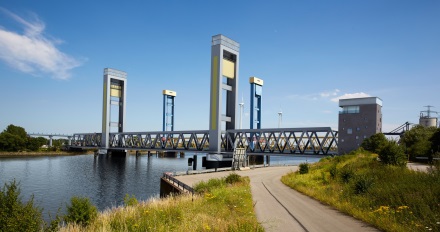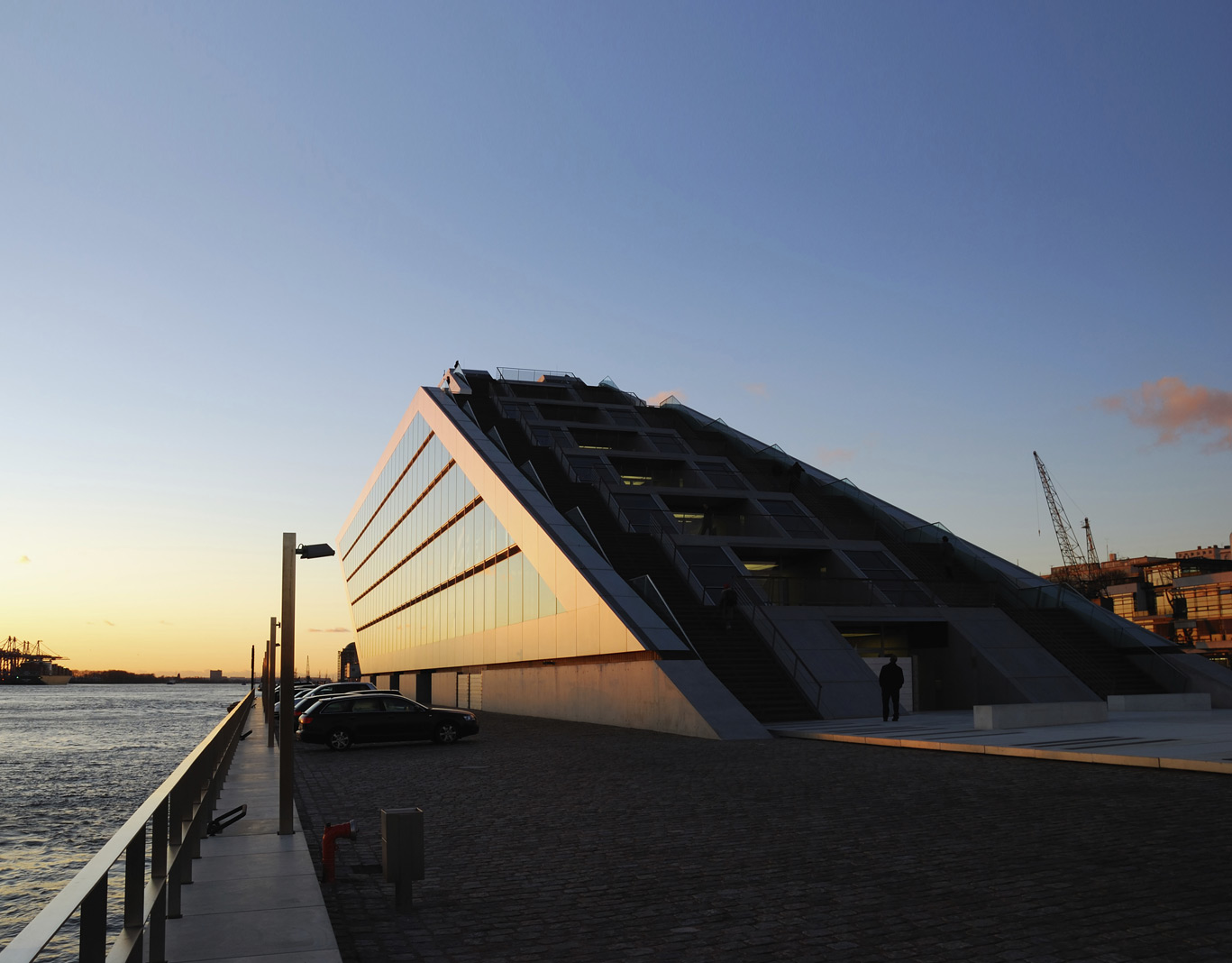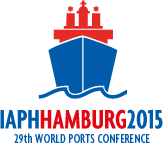
The Port of Hamburg is adjusting to accommodate growing Traffic and Trade Volumes
Flexibility and foresight are vital when it comes to intelligent port management. The construction of the New Kattwyk Railway Bridge and the Rethebrücke bascule bridge in the Port of Hamburg are future-oriented measures the Hamburg Port Authority (HPA) is taking to disentangle road and rail traffic, ease the burden on heavily frequented routes and improve traffic flows. Both bridges are strategically important transport links in the Port of Hamburg.
The Kattwyk Bridge, built in the 1970s, is one of Europe‘s largest railway bridges and a major east-west link across the Süderelbe [Southern Elbe] for trains and road vehicles as well as for cyclists and pedestrians. Not only does the entire rail traffic within the port travel across the Kattwyk Bridge, it is also used to move goods to Scandinavia and the Baltic states, serving as a direct connection to the major container terminals in the western part of the Port of Hamburg. Every two hours the Kattwyk Bridge is raised to allow ships to pass through, and road and rail traffic comes to a stop for about 15 to 20 minutes. The fact that the bridge is used by cars as well as trains causes additional delays.
Once the New Kattwyk Railway Bridge is completed, road and rail traffic will be separated, which will reduce waiting times and benefit the environment. The New Kattwyk Railway Bridge will only be used by trains. In addition, it will feature a generously dimensioned bicycle track and footpath. The existing Kattwyk Bridge will be used by road traffic. The construction of the new bridge to the north of the existing one means that incoming ships will in future pass under two bridges in a row.
Whilst construction of the New Kattwyk Railway Bridge has only just started, the Rethebrücke bascule bridge project has already passed an important milestone. In mid July the HPA lifted in position the leaves of the new Rethebrücke bascule bridge. The altogether four bridge leaves allow road vehicles and trains to travel independently from each other. Traffic conditions for the around 7,000 vehicles that cross the river Rethe daily will improve significantly as currently the road bridge has to be closed to road traffic whenever trains cross the bridge, which is about 40 times a day. At the same time the new bridge will also ease the situation on the water. At 64 metres, the ship clearance width of the new bascule bridge will be 20 metres wider than that of the existing lift bridge, which opens to vessels approximately 3,000 times per year. The leaves of the new bridge were manufactured in Wilhelmshaven and afterwards shipped to Hamburg on two floating pontoons.
The Kattwyk Bridge, built in the 1970s, is one of Europe‘s largest railway bridges and a major east-west link across the Süderelbe [Southern Elbe] for trains and road vehicles as well as for cyclists and pedestrians. Not only does the entire rail traffic within the port travel across the Kattwyk Bridge, it is also used to move goods to Scandinavia and the Baltic states, serving as a direct connection to the major container terminals in the western part of the Port of Hamburg. Every two hours the Kattwyk Bridge is raised to allow ships to pass through, and road and rail traffic comes to a stop for about 15 to 20 minutes. The fact that the bridge is used by cars as well as trains causes additional delays.
Once the New Kattwyk Railway Bridge is completed, road and rail traffic will be separated, which will reduce waiting times and benefit the environment. The New Kattwyk Railway Bridge will only be used by trains. In addition, it will feature a generously dimensioned bicycle track and footpath. The existing Kattwyk Bridge will be used by road traffic. The construction of the new bridge to the north of the existing one means that incoming ships will in future pass under two bridges in a row.
Whilst construction of the New Kattwyk Railway Bridge has only just started, the Rethebrücke bascule bridge project has already passed an important milestone. In mid July the HPA lifted in position the leaves of the new Rethebrücke bascule bridge. The altogether four bridge leaves allow road vehicles and trains to travel independently from each other. Traffic conditions for the around 7,000 vehicles that cross the river Rethe daily will improve significantly as currently the road bridge has to be closed to road traffic whenever trains cross the bridge, which is about 40 times a day. At the same time the new bridge will also ease the situation on the water. At 64 metres, the ship clearance width of the new bascule bridge will be 20 metres wider than that of the existing lift bridge, which opens to vessels approximately 3,000 times per year. The leaves of the new bridge were manufactured in Wilhelmshaven and afterwards shipped to Hamburg on two floating pontoons.
smartNEWS



